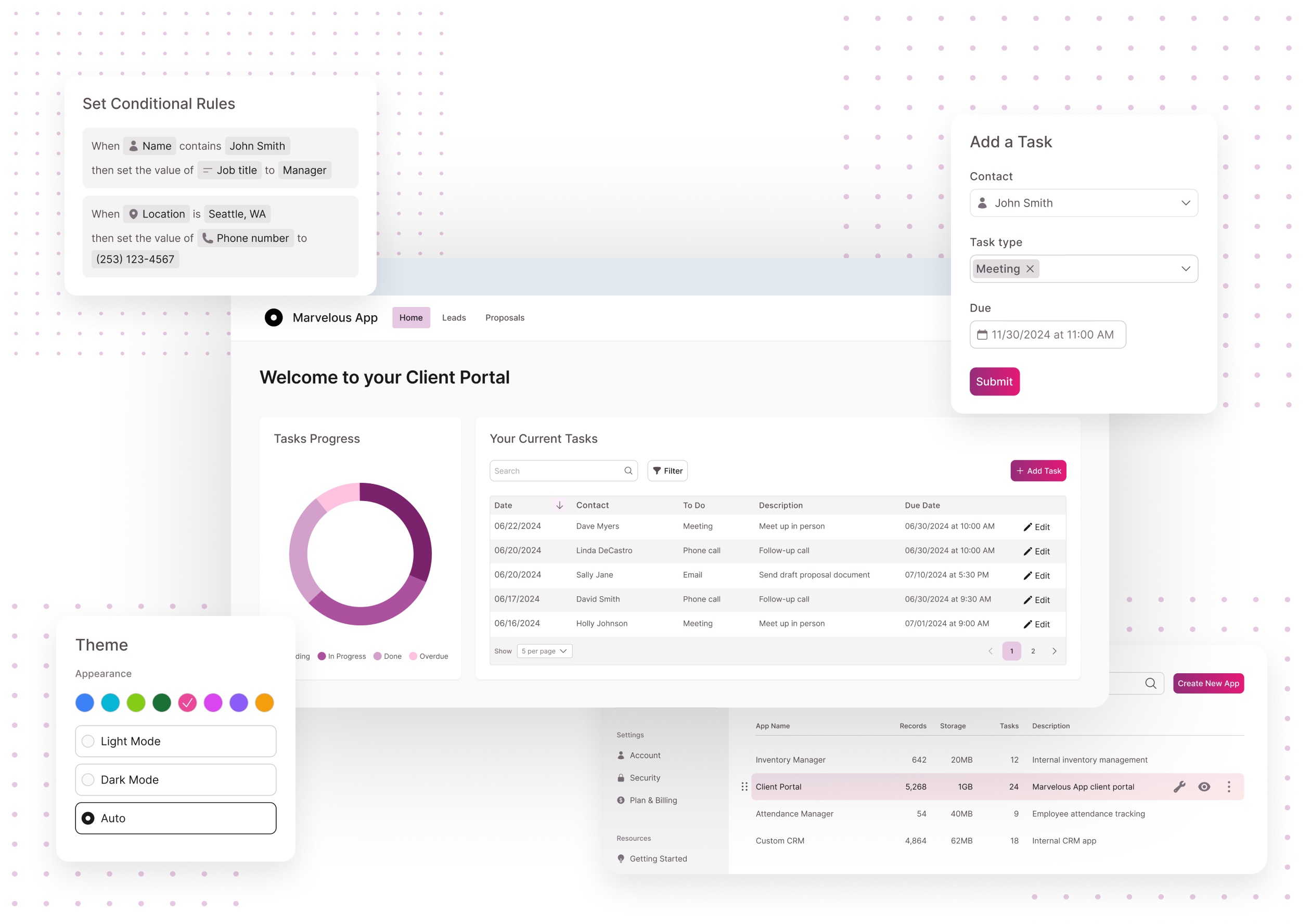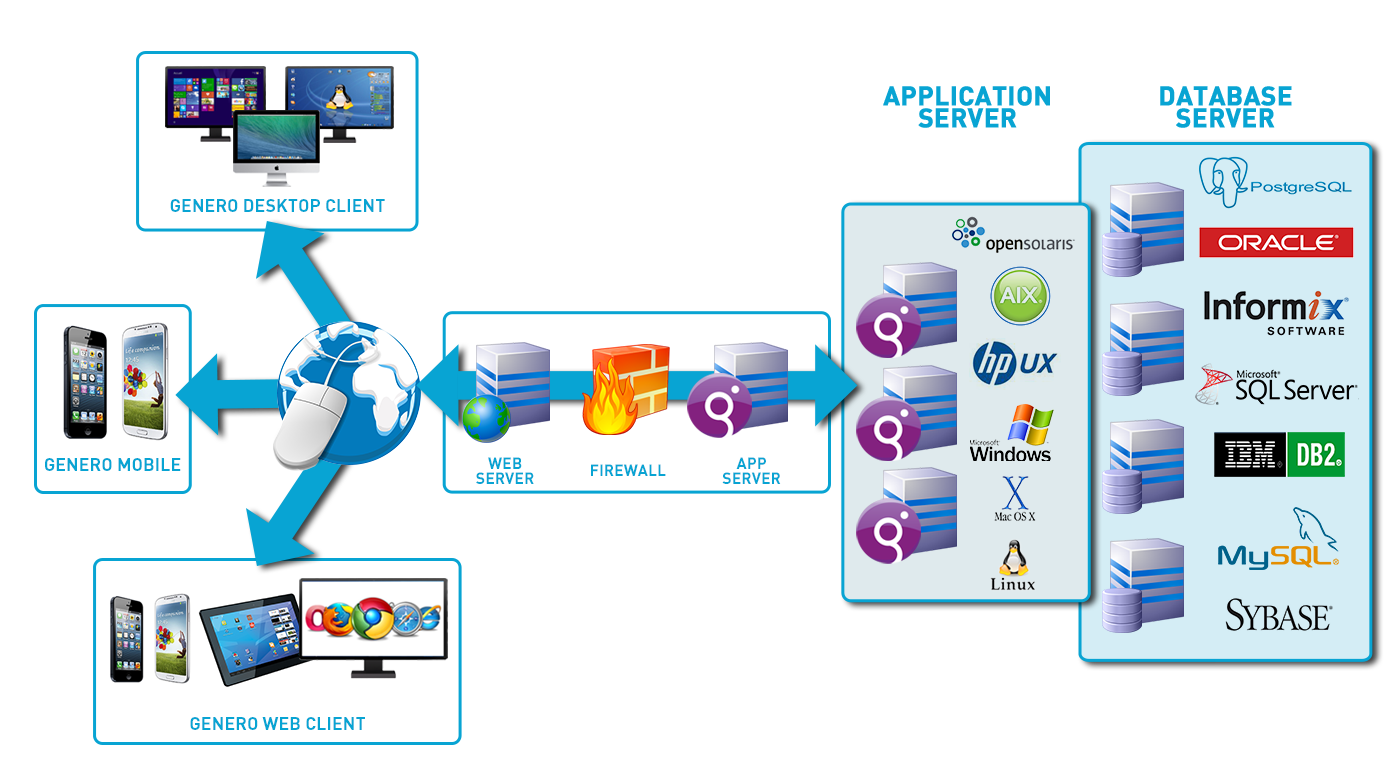No-Code Platforms for Open System Database Production: Conserve Time and Resources
No-Code Platforms for Open System Database Production: Conserve Time and Resources
Blog Article
A Comprehensive Guide to Executing Scalable Databases Without the Demand for Coding Experience
In the contemporary landscape of data management, the ability to execute scalable data sources without coding proficiency is ending up being progressively necessary for organizations of all sizes. This guide aims to illuminate the procedure, concentrating on straightforward tools and instinctive interfaces that debunk database configuration. By analyzing essential attributes, efficient techniques for application, and best techniques for ongoing management, we will address just how also non-technical users can confidently navigate this facility terrain. What are the important elements that can absolutely encourage these users to leverage scalable data sources successfully? The responses might redefine your technique to data management.
Recognizing Scalable Databases
In the world of modern data administration, scalable databases have emerged as a vital solution for organizations seeking to manage enhancing quantities of details successfully. These data sources are created to accommodate growth by enabling the seamless enhancement of sources, whether through straight scaling (including extra makers) or upright scaling (updating existing machines) This flexibility is essential in today's hectic electronic landscape, where information is created at an unmatched rate.
Scalable data sources generally make use of distributed designs, which allow data to be spread throughout numerous nodes. This distribution not just enhances efficiency yet additionally gives redundancy, making sure data availability even in case of equipment failings. Scalability can be a vital element for various applications, consisting of ecommerce platforms, social media networks, and huge data analytics, where user need can vary dramatically.
Moreover, scalable data sources commonly feature durable data uniformity designs that stabilize efficiency and integrity. Organizations needs to consider their details needs, such as read and compose rates, information honesty, and fault tolerance when choosing a scalable database service. Inevitably, understanding the underlying principles of scalable databases is necessary for companies aiming to thrive in a progressively data-driven world.
Trick Functions to Seek
When examining scalable databases, numerous key features are critical to ensuring optimum performance and dependability. Think about the design of the data source. A dispersed architecture can improve scalability by allowing information to be saved throughout numerous nodes, helping with smooth information access and processing as demand boosts.
Another critical function is information dividing, which enables efficient administration of huge datasets by separating them right into smaller sized, much more workable items (no-code). This technique not just boosts efficiency but additionally simplifies resource allocation
Additionally, look for durable replication capacities. This attribute makes certain data redundancy and high availability, minimizing downtime throughout upkeep or unanticipated failures.
Performance surveillance tools are also essential, as they provide real-time insights into system health and operational efficiency, allowing for prompt changes to keep optimum efficiency.

User-Friendly Database Devices
Simpleness is a vital component in the style of user-friendly data source devices, as it improves accessibility for individuals with differing levels of technical proficiency. no-code. These devices prioritize instinctive user interfaces, allowing individuals to develop, handle, and inquiry databases without calling for comprehensive programs knowledge
Trick features commonly consist of drag-and-drop performance, aesthetic information modeling, and pre-built themes that enhance the setup procedure. Such devices typically use led tutorials or onboarding procedures that help with individual engagement and decrease the learning contour. Furthermore, smooth combination with prominent data resources and solutions guarantees that individuals can conveniently import and export data, additionally streamlining procedures.

Moreover, robust support and area resources, such as discussion forums and paperwork, improve the customer experience by supplying help when needed. Overall, user-friendly data source devices encourage organizations to harness the power of scalable databases, making data administration easily accessible to everyone involved.
Step-by-Step Implementation Overview
How can organizations effectively execute Recommended Reading scalable databases to satisfy their expanding information requirements? The process starts with determining certain information requirements, including the quantity, selection, and rate of information that will certainly be refined. Next, organizations need to examine user-friendly database devices that provide scalability attributes, such as cloud-based solutions or took care of database solutions.
Once the appropriate tool is picked, the next action involves configuring the database atmosphere. This includes setting up circumstances, specifying user authorizations, and developing data structures that line up with business objectives. Organizations ought to then migrate existing data into the brand-new system, guaranteeing data stability and very little interruption to operations.
Post-migration, performing comprehensive screening is critical; this consists of efficiency screening under different tons conditions to guarantee the system can deal with future growth - no-code. Furthermore, it is essential to educate personnel on the data source monitoring user interface to help with seamless usage
Finest Practices for Management
Reliable management of scalable databases calls for a tactical strategy that prioritizes continuous tracking and optimization. To attain this, companies ought to implement robust monitoring tools that give real-time understandings right into database performance metrics, such as inquiry reaction times, source utilization, and deal throughput. Routinely analyzing these metrics can assist recognize bottlenecks and locations for improvement.

Routine backups and catastrophe healing plans are important to protect data honesty and schedule. Developing a routine for checking these back-ups will ensure a look at this now reliable healing process in instance of an unanticipated failing.
In addition, efficiency adjusting should be a constant procedure. Changing indexing strategies, optimizing questions, and scaling resourcesâEUR" whether up and down or horizontallyâEUR" will aid preserve ideal performance as usage demands advance.
Finally, cultivating a society of expertise sharing amongst employee will enable constant knowing and adaptation, making sure that the management of scalable databases continues to be efficient and reliable with time.
Conclusion
To conclude, the application of scalable databases can be successfully accomplished without coding experience through the application of intuitive interfaces and user-friendly devices. By adhering to the outlined techniques for setup, information movement, and performance screening, individuals can navigate the complexities of data source management easily. Highlighting finest techniques for continuous maintenance and partnership additional boosts the capability to manage scalable databases effectively in a swiftly developing data-driven atmosphere.
In the modern landscape of information management, the capacity to execute scalable databases without coding experience is becoming progressively essential for companies of all sizes.In the world of contemporary information administration, scalable databases have arised as an important solution for organizations seeking to take care of increasing quantities of information successfully.Moreover, scalable data sources often include robust information consistency designs that balance efficiency and reliability.How can companies effectively implement scalable data sources to fulfill their growing information needs? Next off, companies need to examine user-friendly data source tools that supply scalability attributes, such as cloud-based remedies or managed data source solutions.
Report this page